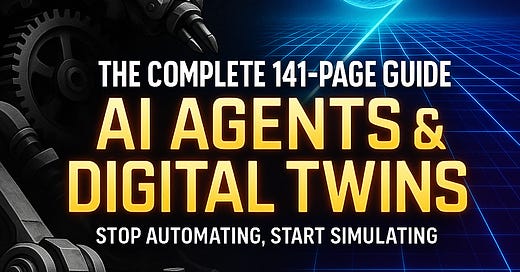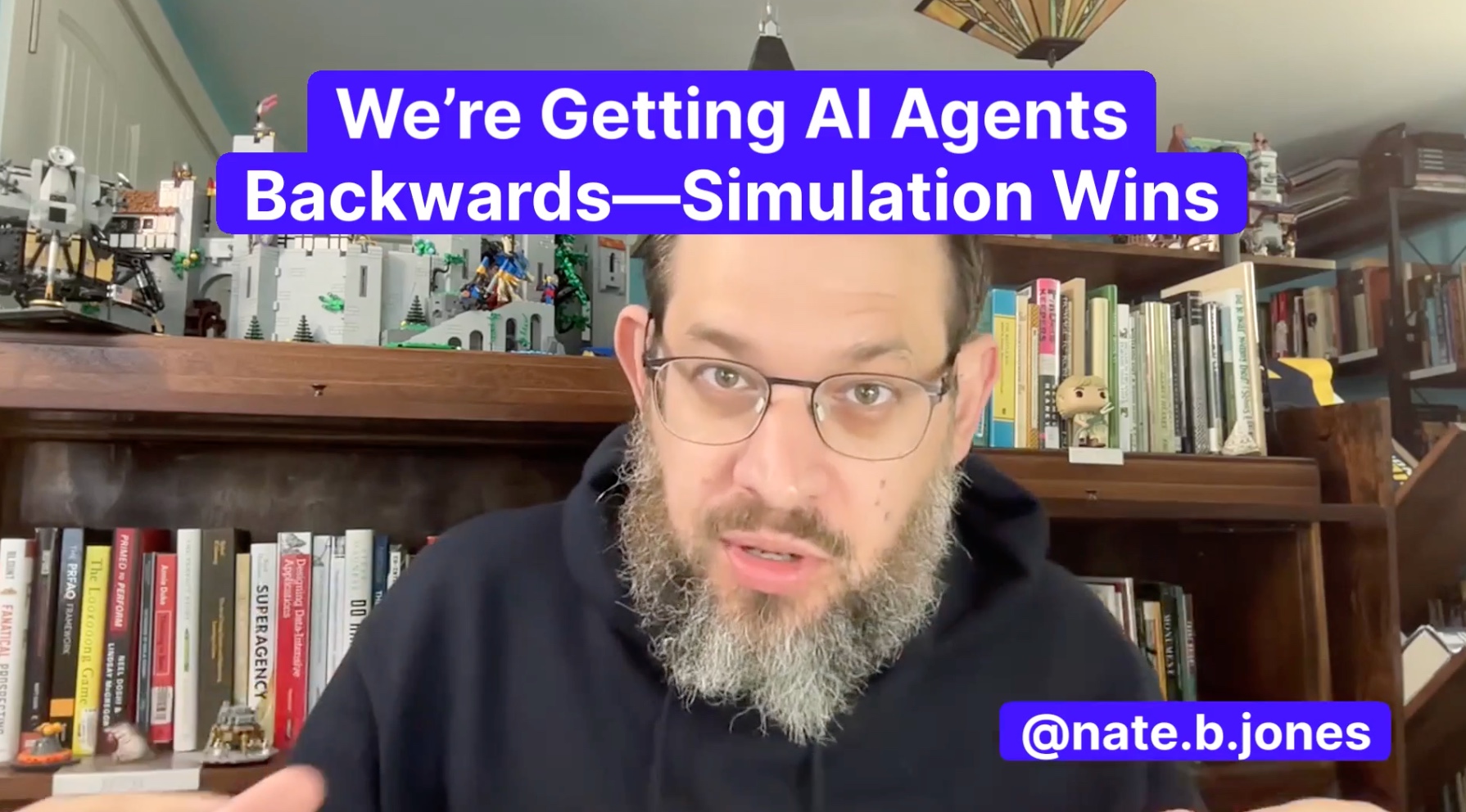Despite all the hype, most of us are getting AI agents wrong.
I’m serious. Look, I get it—the hype around AI is dizzying. Every week another "revolutionary" AI tool promises to automate away our inbox, our tasks, and maybe even our coffee breaks. It’s exciting, it’s overwhelming, and honestly, it's exhausting.
But here's the cold, hard truth: if you're using AI only to "do" tasks, you're barely scratching the surface of what’s possible—and you're missing the quiet revolution happening right under your nose. And you’re not alone! 95% of the people and companies I talk to are using AI agents primarily for doing right now. We are all (collectively) missing out by allocating so heavily to agents-that-do vs. agents-that-model.
We're stuck in a fundamental misunderstanding about AI agents. Everyone talks about them as glorified productivity assistants—faster writers, smarter chatbots, tireless task completers. Do do do. It’s all execution words. But that’s like using your smartphone solely as a flashlight: sure, it works, but you're ignoring the capabilities that change your life.
The real power—the game-changing, transformative potential—isn’t in AI agents that "do," but in AI agents that “model.”
What does that mean? It means using AI not to automate your emails, but to predict what will happen when you send them. It’s about shifting your perspective from simple task automation to strategic simulation—what’s called “digital twin” modeling. It’s creating virtual copies of your customers, products, and even entire markets, running scenarios that predict outcomes, pinpoint opportunities, and identify risks before they become crises.
Why is this so important?
Because in business (and our personal lives), decisions are everything. A single bad decision can cost millions, derail a promising product, or miss a market shift entirely. At home, a bad decision can cost a career, a house, a promising relationship. Depending on our responsibilities, we make 8-24 or so high impact decisions a year. What if we had a solid AI agent modeling framework for all of those decisions? How much better would our lives be? How much better would our companies operate? How much better would our products be? That’s why this guide exists.
And here’s the kicker: the traditional decision-making process is broken. It’s too slow, too risky, and often relies on gut feelings or partial data. But imagine if you could test your ideas against hundreds or even thousands of possible futures before you bet real money. Imagine compressing months—or even years—of learning into just days or hours. Imagine knowing exactly how customers would respond to a new feature, a pricing change, or a marketing campaign before you roll it out.
This is the quiet revolution we're facing, and it’s why the shift from "doing" to "modeling" is critical.
Inside this comprehensive 141-page guide (yes I did it again), I've unpacked exactly how you can leverage AI agents as digital twins to supercharge your decision-making and transform your organization. It’s divided into three indispensable sections:
Strategic Vision for Leaders
You'll get clear, concrete examples of how companies are already achieving 20-46% improvements in performance through modeling. Real-world case studies from industries like marketing, automotive, healthcare, and finance show how to calculate ROI, align stakeholders, and forecast the business impact. I lay out a roadmap, backed by data, to take you from basic persona modeling to advanced, society-scale simulations that let you confidently peer into the future.Practitioner's Guide for Builders
Here’s your step-by-step manual for turning vision into reality. I cover three robust approaches (prompting, fine-tuning, RAG), offer detailed workflows, advanced multi-agent simulation methods, and crucially, the 85% accuracy benchmark you need before deployment. Expect clear code examples, validation frameworks, and practical templates that turn abstract theory into hands-on implementation.Transformation Playbook for Change Leaders
This section addresses the toughest part of the puzzle: cultural and organizational change. You'll get a structured approach—from a rapid 30-day start to a comprehensive 3-year enterprise transformation plan. Plus, I tackle head-on the ethical considerations, governance structures, and cultural shifts required to move beyond hype into sustainable, scalable success.
And the practical value? I didn't skimp. You’ll find ready-to-use templates, step-by-step guides, real-world case studies, and precise metrics. Consider this your HQ for translating sophisticated AI modeling techniques into tangible business results.
I’ve spent months researching, testing, refining, and consolidating these insights. This guide isn't speculation or hype—it’s battle-tested, pragmatic advice based on real-world results from companies around the world that are already putting this into practice. And it matters profoundly because the organizations that embrace modeling won’t just move faster—they’ll move smarter, more confidently, and far ahead of their competitors.
Yet despite this revolutionary potential, modeling remains overlooked precisely because it's subtle. Its value isn't immediately visible like automating an email or a task. When it works perfectly, it feels like nothing special happened at all—just a smart decision made smoothly. But that’s exactly the point: modeling quietly prevents disasters, uncovers hidden opportunities, and accelerates learning in ways simple automation never can.
So here's my challenge to you:
If you're serious about leveraging AI—if you're committed to outperforming competitors, avoiding costly missteps, and driving exponential growth—then you need to understand this shift. You need to move from seeing AI as a tool that merely "does" to one that vividly shows what could be.
You need to move from thinking of AI agents as “tools that help you do” to “thinking partners that help you compress time itself to make smarter decisions.”
I wrote this guide to give you one place for everything you need to make this shift a reality. It’s a big guide because what I’ve found experientially is that organizations really struggle with this transition without extra help. We need not just a tools list and an implementation plan, but a mindset shift. We need to start thinking about the future as partially computable, and that’s a new one for us as humans!
Because here's the thing: modeling doesn’t just beat doing—it transforms it. Your AI agents that do? They’ll do better if they have stronger decisioning allocating their resources. Getting AI agents-as-models right unlocks downstream benefits across your entire execution layer. And whether you operate at Fortune 100 level or are building on your own, there are practical ways to use AI agents as world modelers to improve your own decisioning.
The (simulated) world is waiting for you. Let’s get started…
Listen to this episode with a 7-day free trial
Subscribe to Nate’s Substack to listen to this post and get 7 days of free access to the full post archives.
















